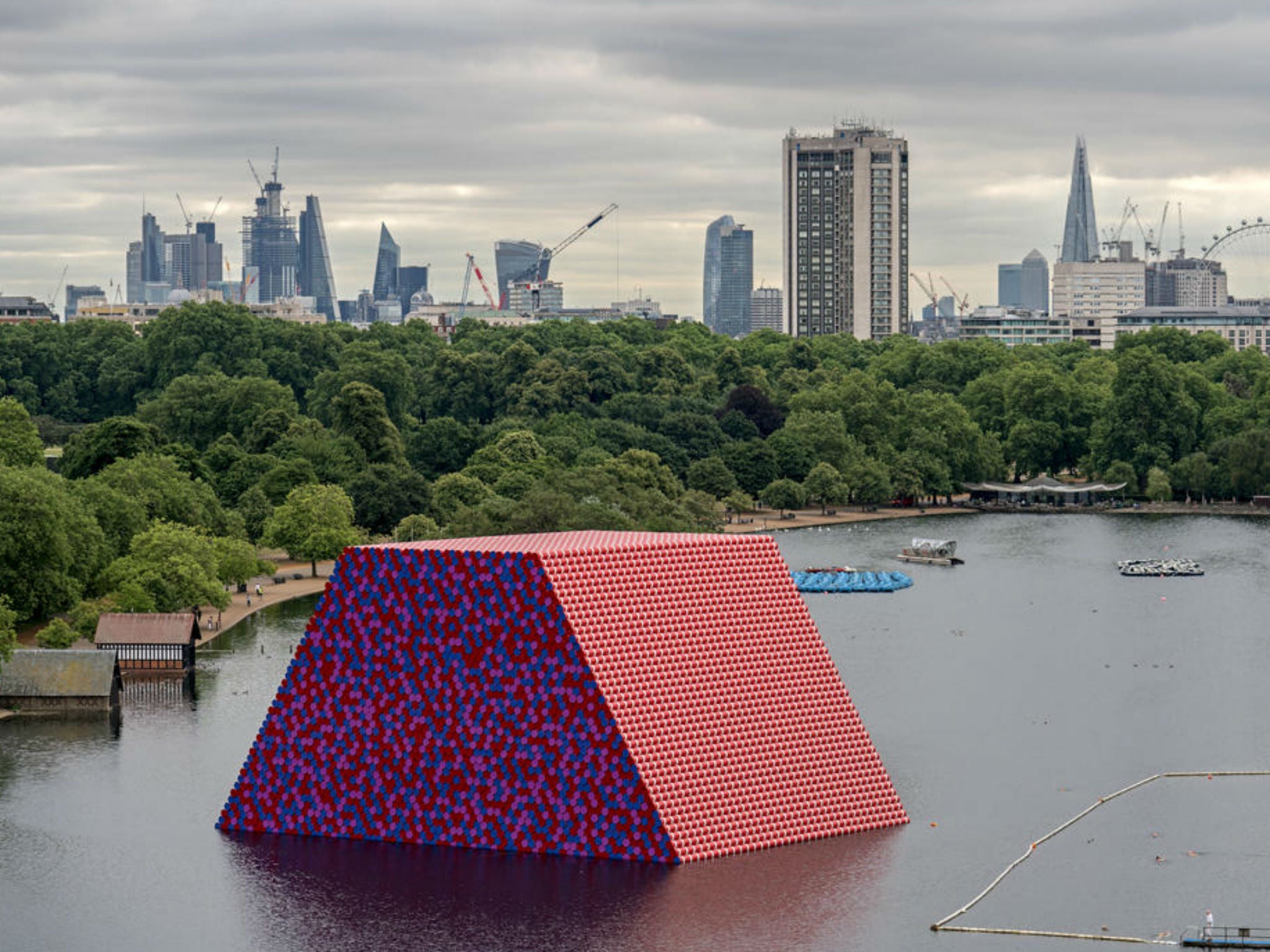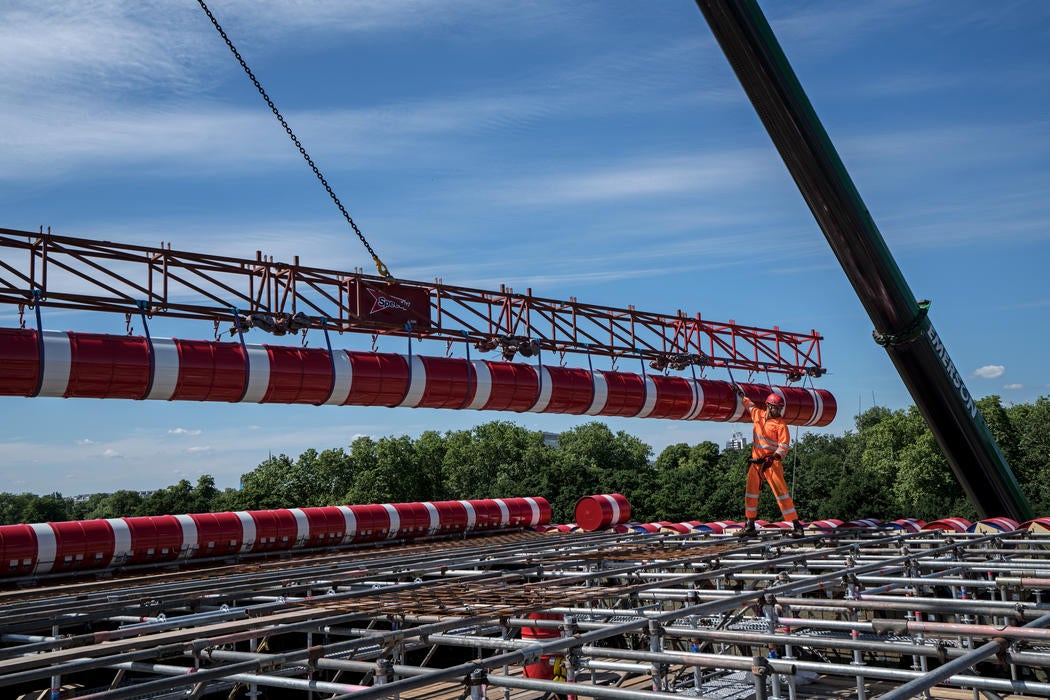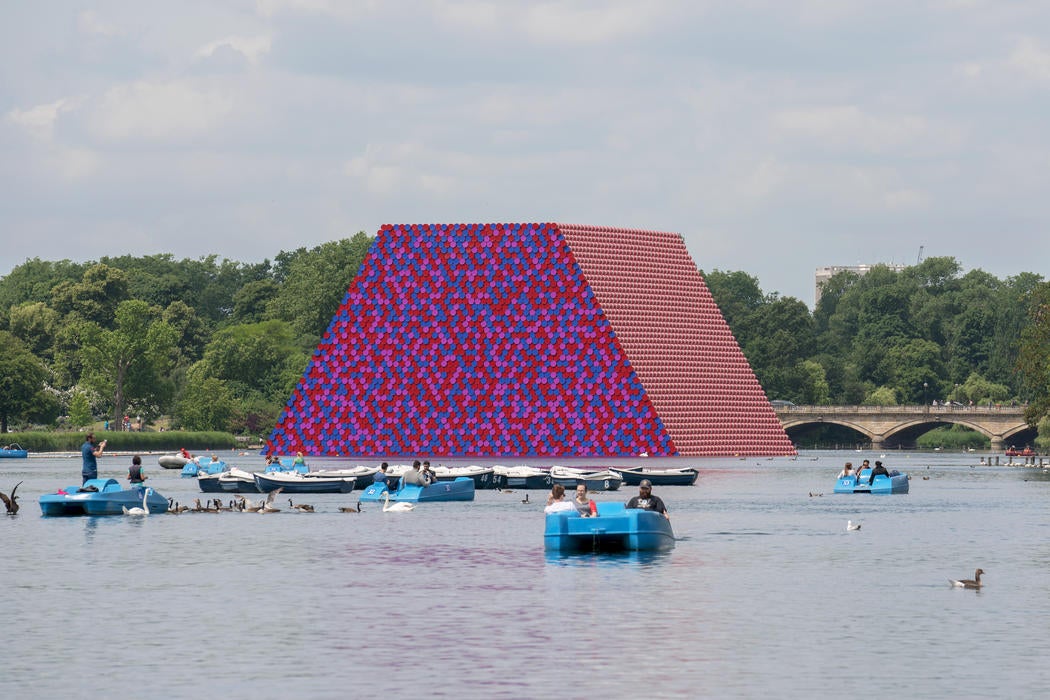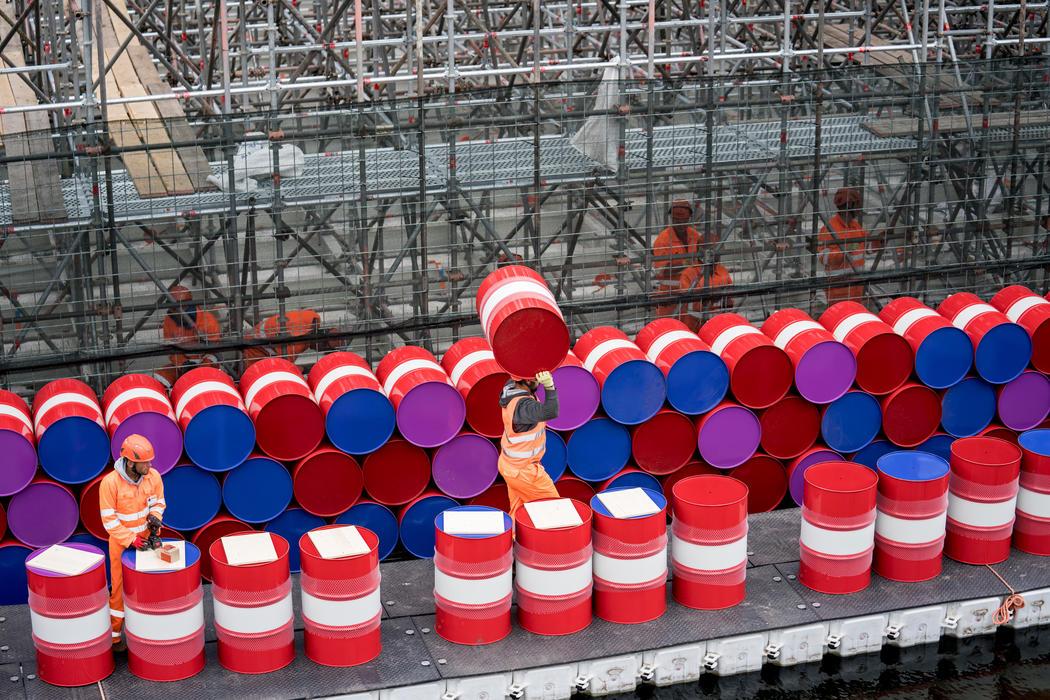Christo's latest sculpture weighs 600 tons (and it floats)
A pyramid made of over 7,000 brightly painted barrels is afloat on the Serpentine in Hyde Park

Wearing a hard hat and a cargo jacket, the artist Christo stood on a platform looking over The Serpentine one April morning and watched his latest creation come to life. As ducks glided across the water, men in orange jumpsuits began assembling the installation, a crane hovering above their heads.
The London Mastaba, Christo’s first major outdoor work in Britain, is now floating in the middle of the lake in Hyde Park. A trapezoidal pyramid of 7,506 painted and horizontally stacked barrels, it is 66 feet tall – as tall as the Sphinx in Egypt – and weighs roughly 600 tons.
Named after a flat-roofed structure with sloping sides that originated some 6,000 years ago in Mesopotamia (the word “mastaba” means “bench” in Arabic), it is a test for a mastaba roughly eight times as high that Christo hopes to put up in the desert in Abu Dhabi.
This is less ambitious than past projects by the Bulgarian-born Christo, 83, and his wife Jeanne-Claude, who died in 2009. These included extending a 25-mile fence across parts of Northern California, as well as wrapping fabric around a bridge in Paris, the Pont Neuf, and around Berlin’s Reichstag building.

Installing the London sculpture has not been plain sailing, however. Christo had to fund the project himself, at a cost of £3 million. (Christo does this for all his projects, through artwork sales.) He then spent a year securing permits from local authorities and from the body that manages Hyde Park, and had two and a half months to get everything done.
“Each work of ours is like an expedition, something incredibly invigorating,” said the artist in an interview. “I love to be here with the workers. I like that process. That journey is so incredible, unforgettable.”
The materials for the sculpture had to be transported into the park by more than 70 trucks, which were ordered to drive at about a mile an hour because the park is full of pedestrians.
Christo’s nephew Vladimir Yavachev, who oversees all of the artist’s outdoor public projects and was also on site, appeared less worried. “Christo has a lot of engineering sense,” he said. “There is a way to do it, and it’s not impossible.” He said the important thing was to “do it simply” and to “do it quickly, too. It needs to go in, be there, and then go out.”

Yavachev – who started working with his uncle in 1991, when he was tasked with carrying the site photographer’s camera bag – said they had regular arguments nowadays, but that it was “actually easier to work with your family, because you can scream at your boss”.
The London Mastaba rests on a floating platform that is anchored to the lake bed. This is topped with a steel scaffolding frame that the barrels are attached to. In late April, the floating cubes were only just being laid out over the lake. Two weeks later, the scaffolding frame was partially in place, and a single row of painted barrels had gone up. By early June, the installation looked nearly complete; a green crane lowered rows of barrels onto what was already a hulking mass.
The mastaba is part of the Serpentine Galleries’ summer program, and it is paired with an exhibition of sculptures, drawings and collages focusing on Christo’s work with barrels and with the mastaba shape.
The Serpentine’s artistic director, Hans-Ulrich Obrist, said he had approached Christo after seeing his 2016 Floating Piers installation on Lake Iseo, Italy, for which walkways made of fabric were laid out on the surface of the lake. “There’s always been this thought that, somehow, Christo is missing in London,” Obrist said.
Discussions started, and Christo came to London. On a walk through Hyde Park, he “pointed at the very site where the sculpture is going to be,” Obrist said, recalling the artist’s determination to put up a floating mastaba, “a form that has obsessed him for a long time”.
Christo denied that his pharaonic projects were signs of an oversized ego. “There’s a lot of humour there,” he said. “They’re bombastic, they’re very simple,” and “not something intimidating”.
Making them happen, however, was a high stakes exercise, he recalled.
Running Fence – which was up for two weeks in 1976, and stood on the private properties of 59 California ranchers – required 42 months of discussions, 18 public hearings and three sessions of the Superior Courts of California. It involved more than 2 million square feet of nylon fabric suspended from a steel cable.

Some residents resented the fence, so Christo’s machinery was destroyed, and there were bomb threats against the installation. “We had to have an airplane flying” to prevent damage, he recalled.
The wrapping of the Pont Neuf nearly fell through when the mayor of Paris tried to revoke a permit he had granted for it. The Reichstag project involved prior testing at a castle and an airplane hangar, bodyguards for Christo because of the death threats against him, and a parliamentary vote introduced by the project’s chief adversary: German chancellor Helmut Kohl.
The London Mastaba faced no such obstacles, and Christo’s team said the installation went through smoothly.
Now the next big thing for Christo is the desert mastaba. He has no idea whether it will materialise, he said, “But we are advancing.”
“I am like a chess player,” he added.
“I hope to live to when the project has happened,” Christo said. “This is the most important thing.”
'The London Mastaba' is on the Serpentine until 23 September
© The New York Times
Join our commenting forum
Join thought-provoking conversations, follow other Independent readers and see their replies
Comments
Bookmark popover
Removed from bookmarks